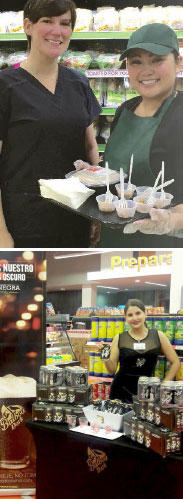 Around the globe, populations are becoming more urbanized, family sizes are shrinking and consumers are facing more competing demands on their time than ever before. As a result, convenience has become the order of the day—and retail formats are following suit. Gone are the days of sprawling hypermarkets with their seemingly endless aisles popping up on the outskirts of every city around the globe. Now retailers are turning to strategically-located smaller format sizes with carefully curated assortments to meet consumers’ demands for a simpler, more convenient shopping experience.
Around the globe, populations are becoming more urbanized, family sizes are shrinking and consumers are facing more competing demands on their time than ever before. As a result, convenience has become the order of the day—and retail formats are following suit. Gone are the days of sprawling hypermarkets with their seemingly endless aisles popping up on the outskirts of every city around the globe. Now retailers are turning to strategically-located smaller format sizes with carefully curated assortments to meet consumers’ demands for a simpler, more convenient shopping experience.
“Perhaps the new retail mantra should be ‘Go small or go home,’ as the ‘Bigger is better’ paradigm has been challenged virtually everywhere,” said Steve Matthesen, former Global President of Retail for Nielsen, in a recent study released by Nielsen. “Hyper-localization and specialization are fueling today’s retail growth. As lifestyle and consumption habits change, we’re seeing a structural shift in where consumers shop and what they buy, and some small formats are driving big growth.”
But just because formats are getting smaller doesn’t mean consumers are expecting fewer services. According to Alexandre Mendes, Head of International for Interactions, Daymon’s consumer experience marketing division, “the demand for personalized connections is also growing among consumers, and as a result, so too is the need for retailers to build experiential marketing programs to engage with their audiences—no matter their store size.”
While in-store demonstration programs might seem the domain of large warehouse clubs and hypermarkets, in fact, says Mendes, in some instances, it is actually easier to deliver a successful program in a smaller-format store than it is in a large one. “There is one key reason for this,” he explains. “Whereas in a supermarket or hypermarket you have the opportunity to engage with only a small percentage of consumers who walk through the door, in a small-format store, you can engage with more than 80 percent of customers.”
 Mendes points out that while consumers in small formats are looking for convenience and ease of shopping, they are also looking for a friendly face and an engaging experience, and welcome the opportunity to try new products. “In-store demonstrations at small formats can be a win for both private brands and national brands. Depending on the products demonstrated, they can provide the retailer with even more opportunities to reinforce its own brand—or offer national brand manufacturers higher exposure to and engagement with their products,” he says.
Mendes points out that while consumers in small formats are looking for convenience and ease of shopping, they are also looking for a friendly face and an engaging experience, and welcome the opportunity to try new products. “In-store demonstrations at small formats can be a win for both private brands and national brands. Depending on the products demonstrated, they can provide the retailer with even more opportunities to reinforce its own brand—or offer national brand manufacturers higher exposure to and engagement with their products,” he says.
Daymon has had success implementing in-store events in several small format retailers in Latin America and the United States. In late 2016, Daymon conducted a pilot program that featured in-store product demonstrations and direct consumer engagement to build brand loyalty for a Brazilian retailer whose stores are approximately 10,000 square feet (about one-quarter the size of the typical supermarket). The program was a proven success, delivering an impressive 300 percent sales lift of demonstrated products during events, and more than a 40 percent sales increase seven weeks after the events. The retailer has since signed on for an on-going and expanded program.
As more retailers in the United States, Europe, Asia and Latin America rescale their formats and product offerings to meet consumers’ demands for convenience, in-store events can be an ideal way to build the bridge between the old and new—engaging consumers’ interest and instilling brand confidence.
To learn more about Daymon’s consumer experience marketing services, contact Alexandre Mendes, Head of International for Interactions, at amendes@daymon.com or Lindsay Steller, Director of Sales and Marketing U.S., at lsteller@daymon.com.

